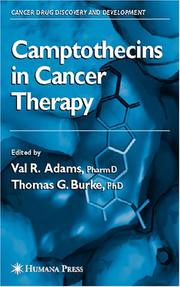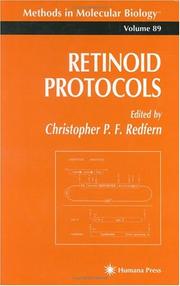| Listing 1 - 8 of 8 |
Sort by
|
Book
Year: 1989 Publisher: New York (N.Y.): Wiley
Abstract | Keywords | Export | Availability | Bookmark
 Loading...
Loading...Choose an application
- Reference Manager
- EndNote
- RefWorks (Direct export to RefWorks)
Book
Year: 1986 Publisher: Geneva WHO
Abstract | Keywords | Export | Availability | Bookmark
 Loading...
Loading...Choose an application
- Reference Manager
- EndNote
- RefWorks (Direct export to RefWorks)
Captan --- Environmental Exposure --- Hazardous Substances --- analogs & derivatives --- prevention & control --- adverse effects
Book
ISSN: 0250863X ISBN: 9241571381 Year: 1992 Volume: vol 138
Abstract | Keywords | Export | Availability | Bookmark
 Loading...
Loading...Choose an application
- Reference Manager
- EndNote
- RefWorks (Direct export to RefWorks)
Propane --- Environmental Exposure --- analogs and derivatives --- toxicity --- Chemische stoffen --- 615.9 --- 615.91 --- 614.878 --- $?$92/11 --- Produits chimiques
Book
ISSN: 0250863X ISBN: 9241572051 9789241572057 Year: 1998 Volume: 205 Publisher: Geneva : World health organization,
Abstract | Keywords | Export | Availability | Bookmark
 Loading...
Loading...Choose an application
- Reference Manager
- EndNote
- RefWorks (Direct export to RefWorks)
Blootstelling aan het milieu --- Dioxinen --- Dioxines --- Dioxins --- Environmental exposure --- Exposition environmentale --- Exposure [Environmental ] --- Milieu [Blootstelling aan het ] --- Occupational Exposure --- Tetrachlorodibenzodioxin--Analogs --- Benzofurans --- Environmental Exposure
Book
ISBN: 9241510498 Year: 1990 Publisher: Geneva World Health Organization
Abstract | Keywords | Export | Availability | Bookmark
 Loading...
Loading...Choose an application
- Reference Manager
- EndNote
- RefWorks (Direct export to RefWorks)
Captan --- Environmental Exposure --- Hazardous Substances --- analogs & derivatives --- prevention & control --- adverse effects --- 615.9 --- 615.91 --- 632.95.024 --- 614.878 --- 614.833 --- $?$90/12 --- Chemische stoffen --- Produits chimiques
Book
ISBN: 9241571594 Year: 1994
Abstract | Keywords | Export | Availability | Bookmark
 Loading...
Loading...Choose an application
- Reference Manager
- EndNote
- RefWorks (Direct export to RefWorks)

ISBN: 9781588290274 1588290271 9781592598663 9786610359509 1280359501 1592598668 1627038167 Year: 2005 Publisher: Totowa, N.J.: Humana press,
Abstract | Keywords | Export | Availability | Bookmark
 Loading...
Loading...Choose an application
- Reference Manager
- EndNote
- RefWorks (Direct export to RefWorks)
Clinical interest in the camptothecins continues to expand even though this class of topoisomerase I inhibitors has been studied for almost 50 years, and two early generation members of the family have gained FDA approval. In Camptothecins in Cancer Therapy, leading clinicians and researchers critically review our current understanding of camptothecins, their shortcomings, and the possibilities for improving their clinical performance. The authors discuss new camptothecin analog development, drug delivery issues for optimizing their anticancer activity, and their potential use in a variety of different cancers. Additional chapters describe what is known about the biochemistry, the pharmacology, and the chemistry of the camptothecins, including the mechanism of topoisomerase and how camptothecins poison this enzyme, the use of animal models in defining the anticancer potential of camptothecins, and the question of camptothecin resistance. Authoritative and up-to-date, Camptothecins in Cancer Therapy provides a comprehensive summary of camptothecin research, as well as a much-needed guide to all the latest information on their optimal therapeutic applications.
Camptothecin --- Neoplasms --- Antineoplastic Agents, Phytogenic --- Camptothecin. --- Cancer --- therapeutic use. --- drug therapy. --- analogs & derivatives. --- pharmacology. --- Chemotherapy. --- Chimiothérapie --- Chemotherapy --- therapeutic use --- drug therapy --- analogs and derivatives --- pharmacology --- Cancer -- Chemotherapy. --- Alkaloids --- Diseases --- Therapeutics --- Antineoplastic Agents --- Biological Science Disciplines --- Therapeutic Uses --- Natural Science Disciplines --- Heterocyclic Compounds --- Analytical, Diagnostic and Therapeutic Techniques and Equipment --- Disciplines and Occupations --- Chemicals and Drugs --- Pharmacologic Actions --- Chemical Actions and Uses --- Pharmacology --- Drug Therapy --- Medicine --- Health & Biological Sciences --- Oncology --- Medicine. --- Oncology. --- Medicine & Public Health. --- Tumors --- Clinical sciences --- Medical profession --- Human biology --- Life sciences --- Medical sciences --- Pathology --- Physicians --- Antineoplastic agents --- Antiviral agents --- Treatment --- Oncology . --- Cancer - Chemotherapy --- Camptothecin - therapeutic use --- Neoplasms - drug therapy --- Antineoplastic Agents, Phytogenic - therapeutic use --- Camptothecin - analogs and derivatives --- Camptothecin - pharmacology

ISBN: 0896034380 9786610836888 1280836881 1592595731 9780896034389 Year: 1998 Volume: 89 Publisher: Totowa (N.J.) : Humana press,
Abstract | Keywords | Export | Availability | Bookmark
 Loading...
Loading...Choose an application
- Reference Manager
- EndNote
- RefWorks (Direct export to RefWorks)
Christopher Redfern brings together in Retinoid Protocols a comprehensive collection of key biochemical and molecular methods for retinoid research. These easily reproducible techniques range from methods of handling and analyzing retinoids to advanced protocols for gene targeting, from binding protein function in transgenic animals to the study of nuclear retinoid receptors. In addition, the book makes accessible to all retinoid researchers such advanced techniques as cloning via RT-PCR, fluorimetry methods, recombinant protein purification and characterization, the use of antisense oligonucleotides to study the role of CRABPs, immunological and in situ hybridization methods, photoaffinity labeling, gel-shift analysis, and differential display. Many of the chapters in Retinoid Protocols represent landmarks in retinoid methodology because they give step-by-step instructions for techniques central to understanding cellular control by retinoids. These indispensable techniques will be fundamental for all those working with retinoids, and so will play a key role in the development of new drugs and therapies for treating human disease.
Retinoids --- Laboratory manuals --- Analysis --- Genetic Techniques --- Receptors, Retinoic Acid --- Investigative Techniques --- Carotenoids --- Receptors, Cytoplasmic and Nuclear --- Transcription Factors --- Proteins --- Polyenes --- Pigments, Biological --- Terpenes --- Analytical, Diagnostic and Therapeutic Techniques and Equipment --- DNA-Binding Proteins --- Cyclohexenes --- Biological Factors --- Amino Acids, Peptides, and Proteins --- Alkenes --- Cyclohexanes --- Hydrocarbons --- Organic Chemicals --- Hydrocarbons, Acyclic --- Cycloparaffins --- Chemicals and Drugs --- Hydrocarbons, Alicyclic --- Hydrocarbons, Cyclic --- Laboratory manuals. --- Vitamin A analogs --- Vitamin A congeners --- Vitamin A derivatives --- Diterpenes --- Interphotoreceptor retinoid-binding protein --- Cytology. --- Cell Biology. --- Cell biology --- Cellular biology --- Biology --- Cells --- Cytologists --- Retinoids - Laboratory manuals --- Retinoids - Analysis - Laboratory manuals
| Listing 1 - 8 of 8 |
Sort by
|

 Search
Search Feedback
Feedback About UniCat
About UniCat  Help
Help News
News